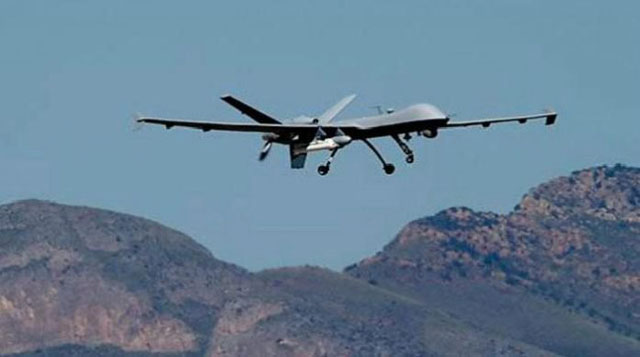
Although Africa is a significant importer of drones, six countries are taking the lead in developing security self-reliance by increasing local production of these small unmanned aircraft.
SPECIAL REPORT | BIRD AGENCY | As unmanned aerial vehicles (UAVs) become increasingly critical for modern armed forces, African countries are investing in the local production of military drones.
The latest African drone procurement data shows the continent is recording ‘significant progress’ in developing indigenous drones – potentially sparking an arms race – as countries vie to gain a technological edge over their neighbours.
The data by Military Africa, an online defence industry resource, tracks up to 35 different made-in-Africa drone models – either in operation or beyond the prototype stage.
“The unmanned aerial vehicles (UAVs) have been developed across seven African countries by thirteen different companies, showcasing the continent’s growing expertise and innovation in this field,” said Military Africa in the 2024 procurement data report.
The digital defence industry resource, lists Egypt, Sudan, South Africa, Nigeria, Kenya and Ethiopia among countries with traces of indigenous technology production of these small aircraft, operated remotely without a human pilot on board.
There are currently some 180 locally-made units. The majority are fixed-wing (174), while rotary wing and vertical take-off and landing (VTOL) are less common types in the market at three units each.
Fixed-wing drones are suitable for long-endurance and long-range missions like search and rescue, maritime patrol and air strikes.
Regionally, Southern Africa leads in locally-produced drones, producing 94 units across 12 models. North Africa follows with 51 units across 14 models, West Africa has produced 20 units and East Africa 15.
South Africa’s Denel is Africa’s leading and largest drone manufacturer.
“South Africa was an early adopter of unmanned aerial vehicles and the military pushed drone development from 1970. Refined by combat experience, the drone industry blossomed in the 80s,” according to the report.
In September 2023, South Africa recorded a ‘significant milestone’ when its locally-manufactured UAV, the Milkor 380 – with an impressive 18.6-meter wingspan and a maximum takeoff weight of 1300 kilograms – achieved its inaugural flight.
Nigeria hosts Africa’s second largest drone manufacturer, the Airforce Institute of Technology (AFIT) with 20 units produced since it started operations in the 2000s.
Nigerian drones include the Tsaigumi UAV, developed in a collaboration between the Airforce Research and Development Center and Portugal-based UAVision.
While North African countries like Egypt are heavily dependent on military drone imports, there are several locally-built or assembled units. These include the EJune-30SW model, which was produced by Egypt’s Ministry of Military, using complex robotics, which Military Africa says could probably be a result of technology transfer from the United Arab Emirates to the North African country.
Another Egyptian-made model is the ASN-209 UAV, a collaboration between the Egyptian Military and Chinese defence manufacturer, Xi-an Aisheng Technology Group.
In Algeria, Star Aviation developed the Amel-Series in 2013. The Amel 300, developed in 2016, was manufactured by the Center Industrial Research Technology (CRTI), with 17 units produced to date.
Tunisia’s Nasnan drone, produced by Tunisia Aero Technologies Industries (TATI), first took flight in August 1998.
“North African countries are not only enthusiastic importers of weapons, they are also increasingly aiming to create indigenous defence capabilities,” explained the report.
In East Africa, Kenya and Ethiopia are at the top of the list for local manufacturing of military drones.
Kenya has reverse-engineered Israel’s Aerostar drone – christened ‘TAI’ – with the help of Turkish engineers. The model was unveiled in 2021.
Ethiopia’s WanderB (designated MDAV-1) has two variants: UAV and Reserve Component (RC) Training. In 2010, the country also displayed a prototype, the MALE UAV, developed by Ethiopian engineers and Turkish company, Milyaz.
Drones have been used for a variety of purposes in Africa, from combating terrorism to monitoring illegal activities like poaching and smuggling to delivering medical supplies to remote areas. There is an increased focus now on military drones, however.
“The use of military drones in Africa has sharply increased in recent years, with at least 21 countries operating drones for military purposes,” the report reads, with information gleaned from procurement data.
Nigeria, Algeria and Ethiopia are listed as the most viable markets for domestic drone industries, based on the number and types of drones purchased annually. Nigeria leads with 28 types.
Egypt has purchased the most drones, at 267, followed by Morocco with 233, with North Africa considered Africa’s most powerful region in terms of military capabilities and expenditure.
Nigeria comes third on the list with 177 drones purchased and is also considered a heavy military spender.
Africa mostly imports military drones from China (400 units), Israel (309 units) and the United States of America (227 units).
****
SOURCE: bird, story agency
 The Independent Uganda: You get the Truth we Pay the Price
The Independent Uganda: You get the Truth we Pay the Price




Hi,
Greetings to you.
This article needs to be credited properly, considering that it is a result of multi-year research. It is only fair.
Here is the link for the main article.
https://www.military.africa/2024/04/complete-african-drone-procurement-data1980-2024/
Please do the needful.